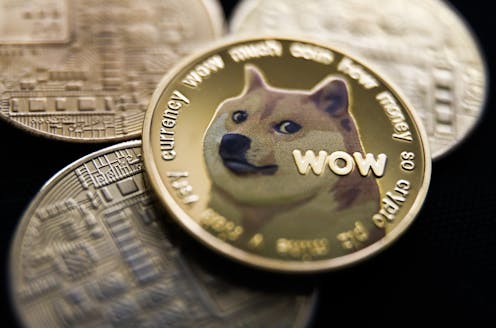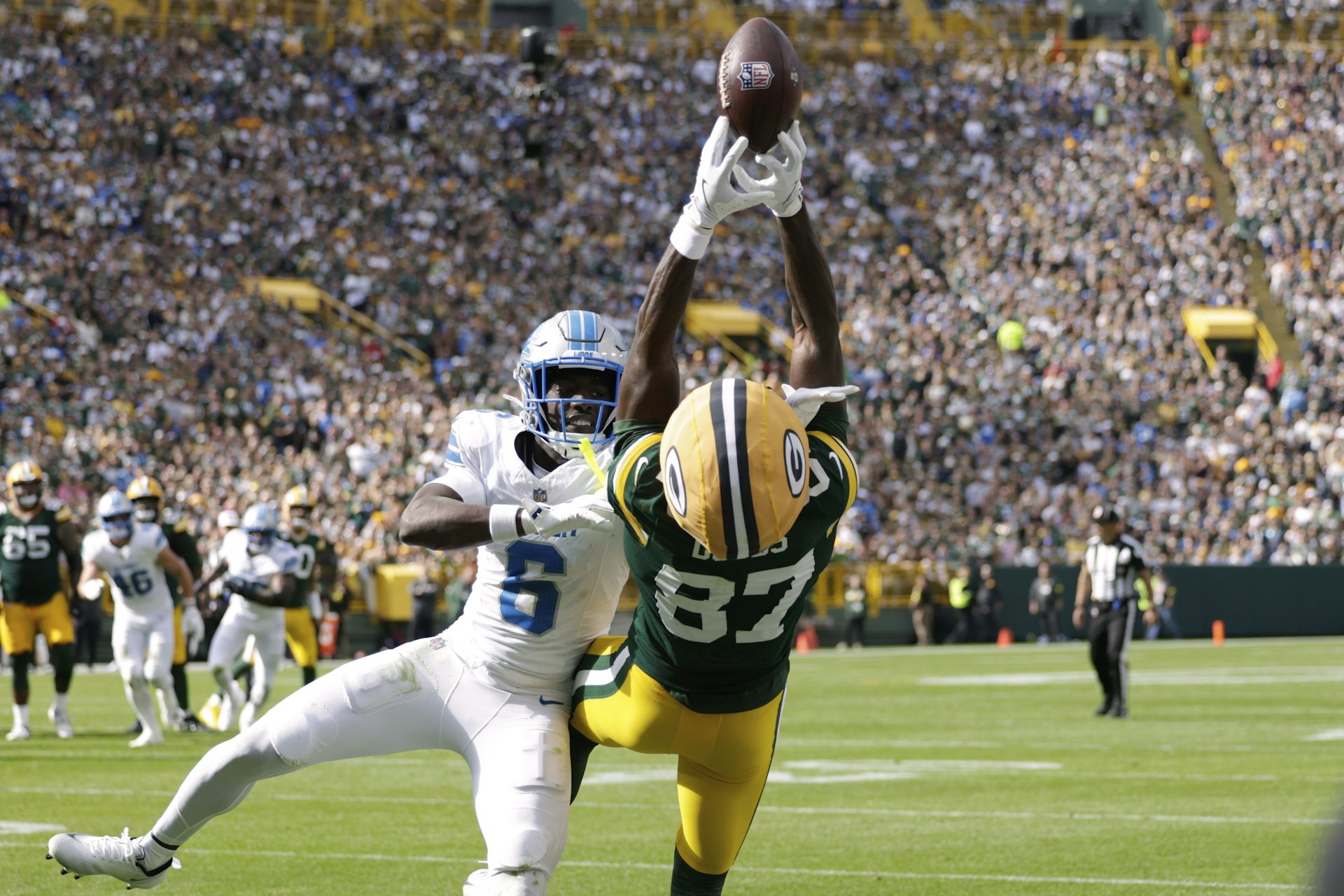Dogecoin is a joke − so what’s behind its rally?
Dogecoin’s rebound – after several years of devaluation and disrepute – reveals the extent to which community, attention and hype undergird the investment.

Rockets aren’t the only thing Elon Musk is sending into the stratosphere.
After a three-year plummet, Dogecoin is blasting off again, jumping 250% since the election of Donald Trump – part of a broader wave of optimism in the industry, due to Trump’s courting of crypto advocates during his campaign.
Trump’s informal appointment of Musk to what he calls the Department of Government Efficiency – D.O.G.E for short – also helped pump the dog-themed meme coin.
This isn’t the first time Musk, who styles himself as “the Dogefather,” has fueled interest in Dogecoin.
In May 2021, its price shot up in anticipation of Musk’s guest appearance on “Saturday Night Live.” During one skit, Musk played a financial analyst in conversation with a Weekend Update host, who repeatedly asked him, “What is Dogecoin?” After some obfuscation, Musk’s character finally admitted that it was a hustle. The price of the coin went into a freefall. Just over a year later, it had shed over 90% of its peak value.
The losses hit small investors hard. In 2022, one of them filed a class action lawsuit against Musk for market manipulation and insider trading, though the case was dismissed in August 2024.
Why has Dogecoin – a meme coin that was never meant to be taken seriously as an investment – seen such extreme swings in value?
We’re all in this together
Dogecoin was launched in 2013 to spoof bitcoin and a slew of other cryptocurrencies that were claiming to disrupt the traditional world of finance. Two strangers from across the globe met online, copied the code of an existing coin, and branded it with the already popular Doge internet meme – a picture of a Shiba Inu dog surrounded by fragments of broken English: “wow much coin.”
Although their main goal was to make the coin pointless and undesirable, it became one of the most popular and enduring cryptocurrencies on the market.
Following Dogecoin’s previous surge in 2021, I studied how its fervent network of influencers and everyday investors worked together to draw tremendous attention – and capital – to the joke currency.
To understand the appeal of these absurd investments, you have to look at the time and energy that users invest into these networks and the rewards, both financial and social, they get in return.
Meme coins are collaborative enterprises. Members of these online communities have an economic incentive to become outspoken boosters: The more the value of Dogecoin rises, the more their investments grow. But they also receive social validation from other meme coin investors when they pump up the coin.
In other words, behind every meme coin is a collective of strangers on a communal mission to make more money.
Dogecoin and its imitators have been described by their leadership as crypto movements, shared journeys and community-owned projects. Beyond branding the assets with culturally resonant images, whether it’s a Shiba Inu dog or Pepe the Frog, successful crypto ventures are characterized by complex webs of trust. Trust in the technology. Trust in its potential for future appreciation. And trust that those holding power in the networks won’t exploit the rest.
This loyalty is woven among a global network of users who collaborate around the clock to promote their coin and demonstrate their unwavering commitment to its success.
In times of price appreciation, the collective buzzes with elation.
During price dips, community members mutually reinforce their comrades’ – and their own – beliefs that this is just a bump in the road and that their collective efforts will eventually lead to a handsome payoff. Even in the coldest of crypto winters, this ritualistic behavior helps these speculative communities endure. Community serves as a substitute for financial loss.
The investment strategies in these communities – and the conviction in their payoff – involve repeating and reposting what others have said, like any traditional internet meme.
Trolling traditional valuation
The real value of meme coins cannot be understood in the same way as traditional assets, such as stocks and physical commodities. These types of assets have fundamentals, such as a company’s financial statements, or public demand for basic goods, from coffee to oil.
Conversely, the fundamentals of meme coins are reflected in their network activity, such as daily active users, and less concrete metrics, such as social sentiment and mindshare – how much public awareness a coin has generated compared with its rivals.
Of course, the valuations of traditional assets are also affected by these social factors. The difference is that meme coins offer little by way of productive activity. They add nothing to the economy. Occasionally, their leadership will build financial services around them, but these are generally added as afterthoughts, especially as a way to drum up more speculative excitement.
Meme coins troll the traditional conventions of valuation and mock the edicts and dogmas of mainstream investors.
And that’s exactly the point.
Participation in meme coin communities – or any crypto community, for that matter – entails embracing an alternative economic experience. They are speculative sandboxes for playing outside of the conventional rules of investment.
Who let the Doge out?
Musk is the quintessential meme coin influencer.
As the richest man in the world, he’s viewed by many as a paragon of savvy investing. His massive following extends far beyond Dogecoin’s social network. And his promotional efforts are playful – so playful that the judge in his class-action case dismissed his Dogecoin tweets as mere “puffery” and that “no reasonable investor could rely upon them.”
Dogecoin previously reached the peak of its memetic momentum when Musk appeared on “Saturday Night Live.” Now, instead of sitting at the Weekend Update news desk cracking jokes, he’s sitting in Trump’s office advising the president-elect. In other words, Dogecoin’s memetic resonance has ascended from pop culture to politics, helping it capture a bigger slice of the public’s mindshare.
While Dogecoin has specifically benefited from Musk’s proximity to Trump, the broader crypto market is leaping with optimism for a crypto-friendly administration. Speaking at the Bitcoin 2024 conference in July, the GOP candidate ensured he’d make the United States “the crypto capital of the planet.” After pouring $131 million into this election cycle, the crypto industry can now claim 274 pro-crypto members of the U.S. House of Representatives and 20 pro-crypto U.S. senators.
Between Musk buddying up with Trump and a shifting regulatory environment, the dog can once again run free.
Maximilian Brichta does not work for, consult, own shares in or receive funding from any company or organization that would benefit from this article, and has disclosed no relevant affiliations beyond their academic appointment.
Read These Next
George Plimpton’s 1966 nonfiction classic ‘Paper Lion’ revealed the bruising truths of Detroit Lions
George Plimpton, then a 36-year-old literary editor, endured the brutal realities of a professional…
Research breakthroughs often come through collaborations − attacks on academic freedom threaten this
Academic freedom grew strongly after World War II, with greater university funding, protections and…
Black student unions are under pressure – here’s what they do and how they help Black students find
Black student unions date back to the late 1960s, and were formed so Black students could find community,…






